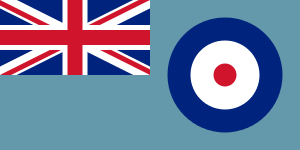Air observer
 |
| Components |
|---|
|
| History |
|
|
| Aircraft |
|
| Structure |
| Personnel |
|
An air observer is a military aircrew member whose duties are predominantly reconnaissance. The term originated in the First World War in the British Royal Flying Corps, and was maintained by its successor, the Royal Air Force. An air observer's brevet was a single wing with an O at the root.
The term is still used in some contexts now, such as police helicopter units.[1]
The first recorded RAF "kill" of the Second World War, on 20 September 1939, was by air observer Sergeant F Letchford, aboard a Fairey Battle, flown by Flying Officer LH Baker.[2]
Observers were also issued with weapons, and expected to engage with enemy aircraft in the early days of military aviation. Over time, the role changed and separate gunnery specialities emerged. By the Second World War the RAF commonly used the designation "air observer/navigator" in bomber crew.
Air observers were trained at the Air Observer Schools.[3]
Fleet Air Arm
Observer is still the term used in the Royal Navy's Fleet Air Arm (FAA) for most non-pilot aircrew officers. The term dates back to one of the original roles of aircraft at sea, in the big gun era, which was to observe fall of shot, and radio back gunnery correction to their ship. Thus the observer originally had to be a highly trained gunnery officer, often senior in rank to the pilot. Unusually, in the FAA, an observer could rise to squadron commander. Modern FAA anti-submarine and transport helicopters are still crewed by a pilot and observer, the observer being responsible for managing the detection and weapon systems - while the pilot does the flying, the observer "fights the aircraft" making the necessary tactical and navigational decisions.[4]
See also
- Aircrew (Flight crew)
References
| ||||||||||||||||||||||||||||||||||||||||||||||